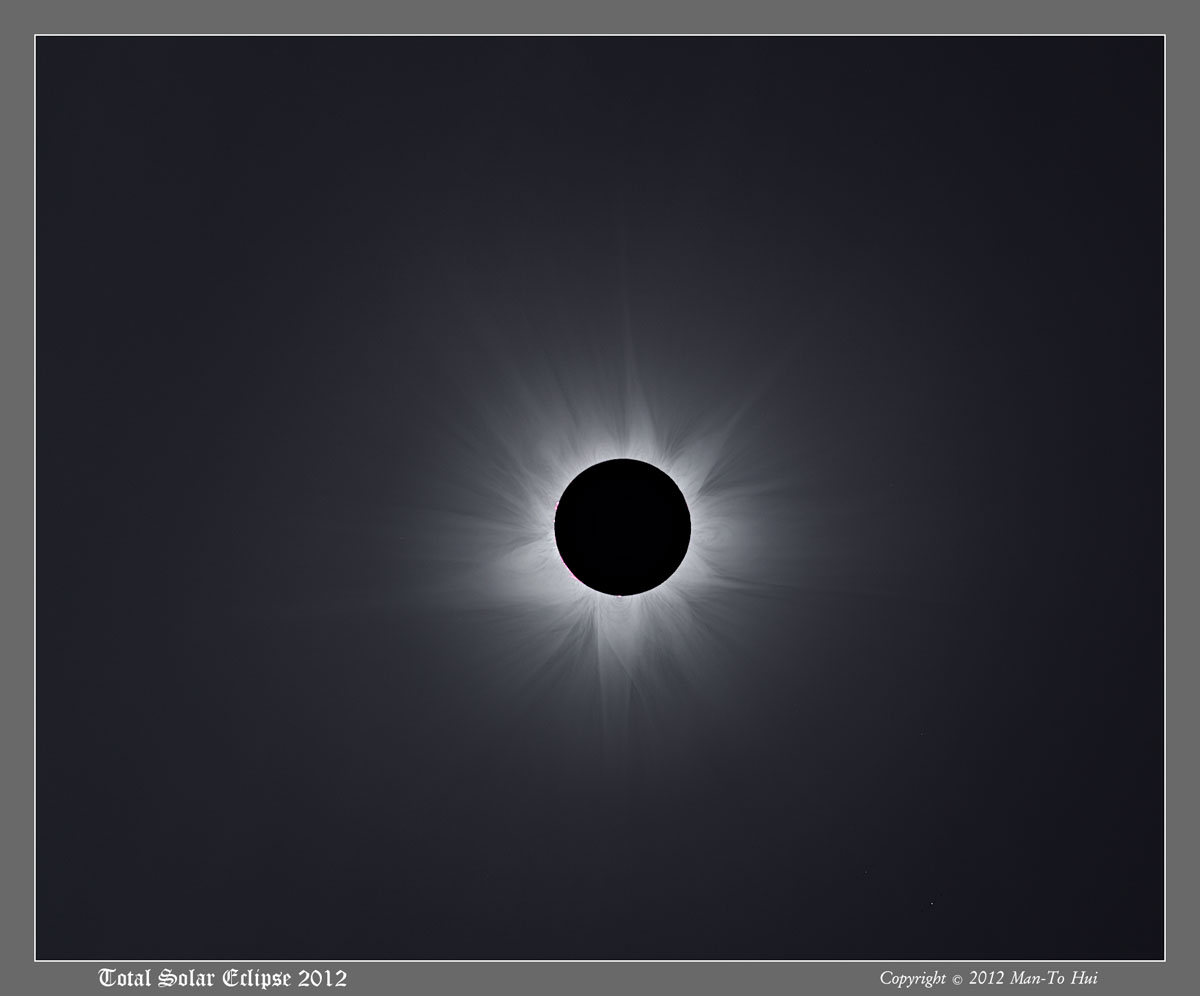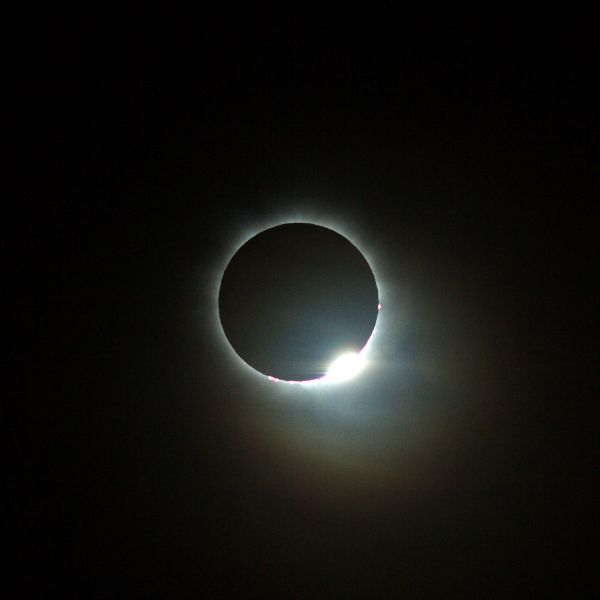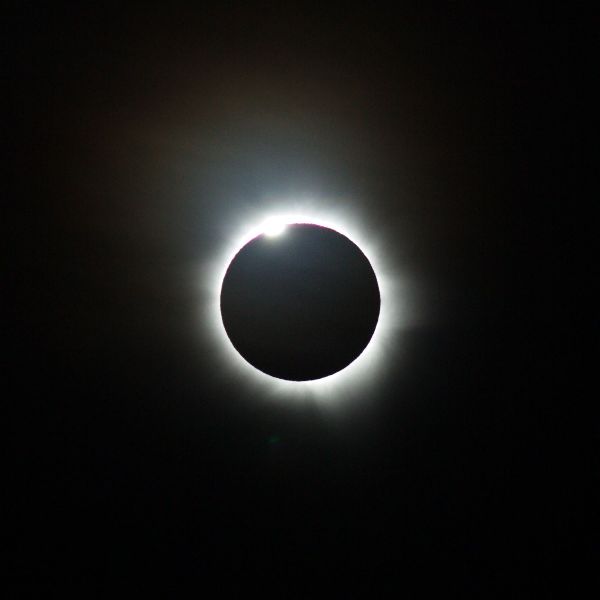The total solar eclipse in Australia, 14 November 2012
Sunday 11 Nov. 2012
My wife
and I left for Cairns, QLD Australian, from Tokyo Narita at night. I brought my
20 cm reflector, Vixen R200-SS with the Alt-Azimuth mount, and 8x32 mm
binocular, Carl Zeizz Victory, with the tripod. I did not consider taking
photos seriously. Instead, we focus on visual observation.
Monday 12
The flight was 7 hours and too short to
have a good sleep. Before the landing we saw the crescent moon and Venus on the
eastern sky. We picked up a rental car and drove around Cairns city where we
had our breakfast.
We walked around Esplanade (a major street of the city), and the weather
changed very quickly. I have never experienced such a phenomenon and you cannot
tell the gpresenth weather there, since it was raining but at the next moment it
stopped raining with the sunshine among the gap of rainclouds. This kind of
pattern was repeated many times.
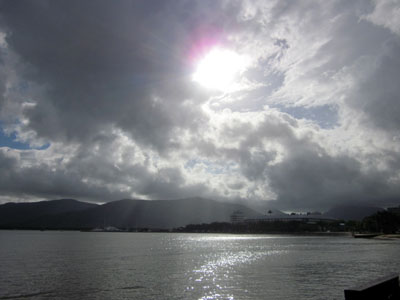
The changeable weather in Carins: 7:26 a.m.12 Nov. local time.
We checked in our hotel at around 10 a.m. It is located in the rainforest and
took 50 minutes by car from the central part of Cairns. The name is Cedar Park
Rainforest Resort. As soon as we checked in a wallaby welcomed us in front of
our room. The owner of the hotel told me if we stay with calm we could see a
platypus at the creek that flows through the hotel.

Wallabies
|
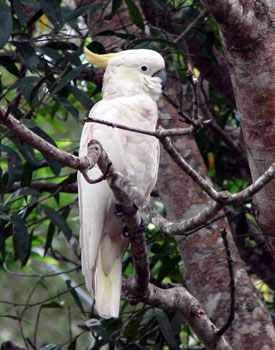
Cockatoo
|
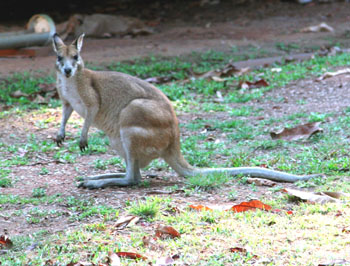
Kangaroo
|
Photos were taken at the hotel.
Canon 20Da, EF24-105 mm, F4 |
Here are some movies of the hotel.
Approaching the parking http://youtu.be/yU4JVyjkDWg
View from the restaurant http://youtu.be/sGtZlMapqCo
Wallaby
http://youtu.be/DmfC3JOAxsc
If the weather permits, we can observe the eclipse at the garden of our hotel.
But the sky seemed to be unstable and the hotel staff said Mareeba city, 30
minutes drive from the hotel, might be a good site. Mareeba is the west of the
Great Dividing Range with less precipitation than in Cairns or Kuranda area
where we stayed. I decided to go to Mareeba for the site preview in the
afternoon. Actually, in advance I found some candidate sites in Mareeba using
Google Earth at home and confirmed they were safe and suitable for the eclipse
observation.
At dusk I wanted to enjoy stargazing but it was impossible due to cloudy and
rainy weather.
Tuesday 13
In the morning we visited Kuranda Butterfly Sanctuary. There are
so many butterflies in the cage where visitors go in. In the afternoon we visited
the house of my wifefs friend who lives in Cairns.
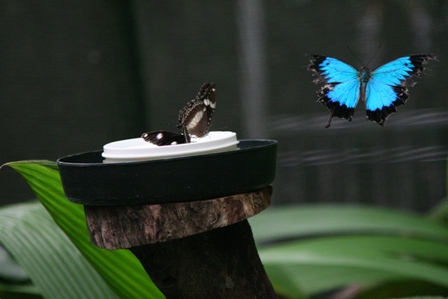
Blue Mountain Butterfly at the Kuranda Butterfly Sanctuary.
|
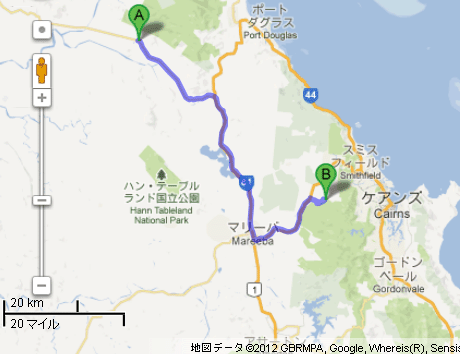
A: Mt. Carbine, B: our hotel. The distance is 100 km.
|
The hotel staff told us that the forecast said it would be cloudy the next
morning. I considered to go to Mareeba or farther for observation and decided to
get up at 3 a.m. At midnight I once wake up because of the sound of raindrops
hitting the roof.
Wednesday 14
We got
up at 3 a.m. and left the hotel for Mt. Carbine, 100 km away, or farther. Before
we drove through Mareeba we noticed the sky was very clear with full of stars.
At 5 a.m. we arrived at Mt. Carbine. On the left side of the road there were
large spaces good for observation. Afterwards, I heard that the best site was
charged to enter, but our site was free.
The sky was clear at the time of our arrival, but as the sun rose higher clouds
appeared only in the direction of the sun. Many people felt hopeless but about
10 minutes before the totality, clouds around the sum disappeared. How lucky!
The second contact did not consist of a single diamond but seemed to have two or elongated
one (see the photo), probably because of the lunar landform. The solar image was strongly
distorted by bad seeing through my 20 cm reflector, and we saw the totality
using 8x32 mm binocular or naked eye.
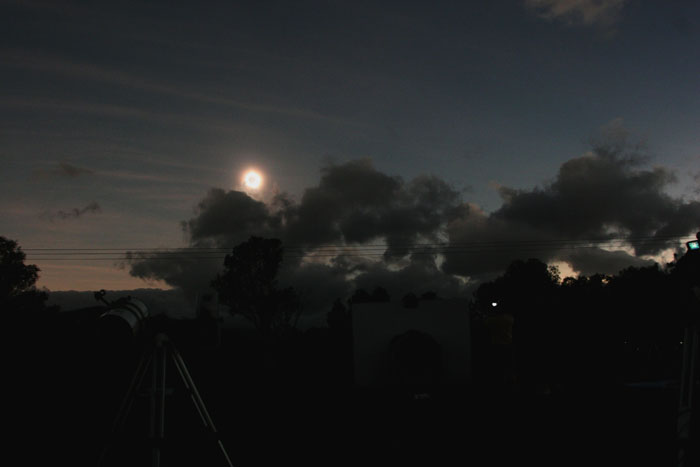
Click to enlarge
Totality at Mt. Carbine: the sun had been hidden by clouds but some 10 minutes before the
totality, clouds around the sun disappeared.
This photo was overexposure due to
the wrong setting of ISO. Canon 20Da, EF24-105 mm, F4
Wentao Xu (Man-To Hui), the Chinese comet hunter took niece photos at the totality (upper left, composite), the
second (lower left) ant the third (lower right) contacts.
By courtesy of Wentao Xu.
Here are many eclipse photos (link to AstroArts).
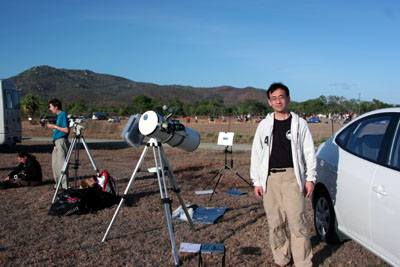
After the totality. There were many eclipse hunters behind us.
It was spectacular, and no photos I have ever seen could reproduce the subtle
tone of the corona! For me it looked like a modern artwork modeled on a jelly
fish. I forgot to see the entire sky or planets and focused only on the black
sun.
The third contact was just like described on a textbook, a single diamond. I was very
satisfied the observation.
There were over one hundred of people from all over the world behind our site.
The man next to me was from Germany and using Vixen mount made in Japan, while
I used the Alt-Az mount made in Germany. Everything seems to be getting global.
Before 10 a.m. we have got our hotel with safe and sound and ate late breakfast.
The weather was getting somewhat stable and I finally stargazed in the suburb
of Mareeba at dusk. The hotel sky was cloudy and I was forced to drive. The site
was light polluted but the two globular clusters, NGC104 and NGC6752, were
impressive with my 20 cm reflector. But in 30 minutes it got clouded and I came
back the hotel.
Thursday 15
I met the
Chinese comet hunter, Wentao Xu (in Mandarin) or Man-To Hui (in Cantonese) who discovered
10 SOHO comets. We have exchanged emails for several years but it was the first
time we have met. He observed the eclipse 46 km away from us.
He is a visual comet hunter but he said light pollution at his site was getting
worse year by year.
http://comethunter.lamost.org/
At dusk
the sky got clear as time went. I enjoyed stargazing using the binocular and
took photos of Magellanic Clouds at the garden of our hotel.
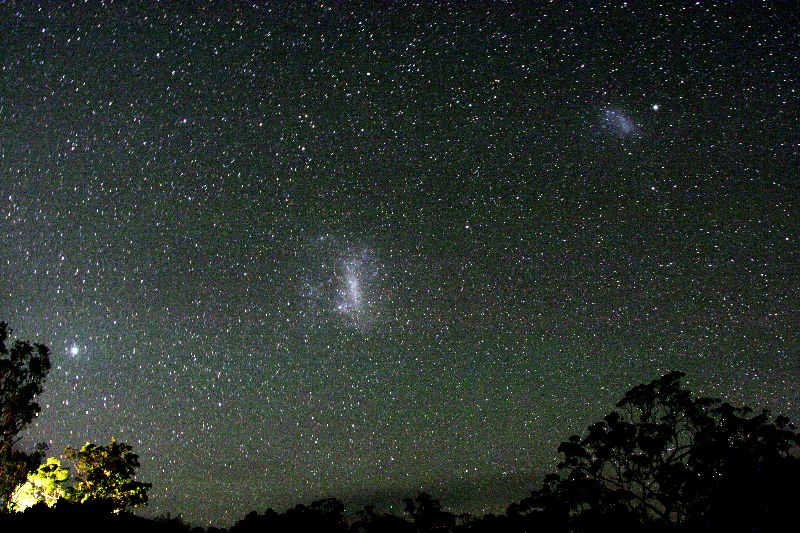 Click to enlarge
Click to enlarge
Small & Large Magellanic Clouds and Canopus (lower left)
Canon 20Da, EF24-105 mm, F4; F4, ISO 3200, 1 min.
Friday 16
I wake up at 2:30 a.m. but the cloud cover was 80%. I went out again at 3 a.m.
and it was cloud less. I set up my 20 cm reflector and aimed it at some of the
major objects: NGC3372,
Eta Carinae Nebula, NGC2069, Tarantula Nebula, NGC3532 and IC2602, open clusters in Carina, some
of the bright HII regions in LMC. I used Paracorr since the focal ratio of the
primary mirror was 4, and changed the magnification (42x with Nagler Type 4 22
mm, 71x with Ethos 13 mm and 131x with XW 7 mm).
Eta Carinae Nebula with Ethos 13 mm was impressive but OIII or UHC filter much
improved the contrast and the dark lanes that made me excited. The same was
true for Tarantula. I wish I could observe these longer with larger aperture.
I went back to my bed before 5 a.m. and got up at 6 a.m. to join the Frankland
Island tour. It was one hour and half drive to Deeral port, south of Cairns, where
the cruise starts. The island is deserted where we enjoyed island guide tour, snorkeling
and the semi-submarine tour. I saw sea turtles from the island and the
semi-submarine for the first time.
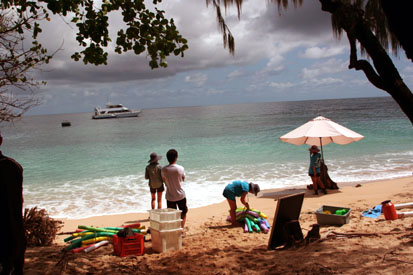
|
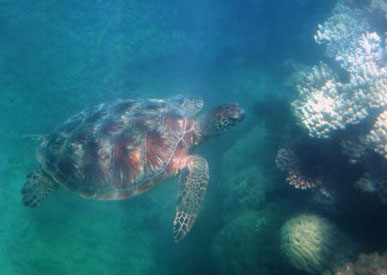
|
Saturday 17
Everything was fine during this trip, and staying in the rainforest
was very comfortable.
The summer Milky Way was under the horizon this time. It would be great to see
it over the sky. We left the continent at noon and arrived at home at midnight.
Back to Home






